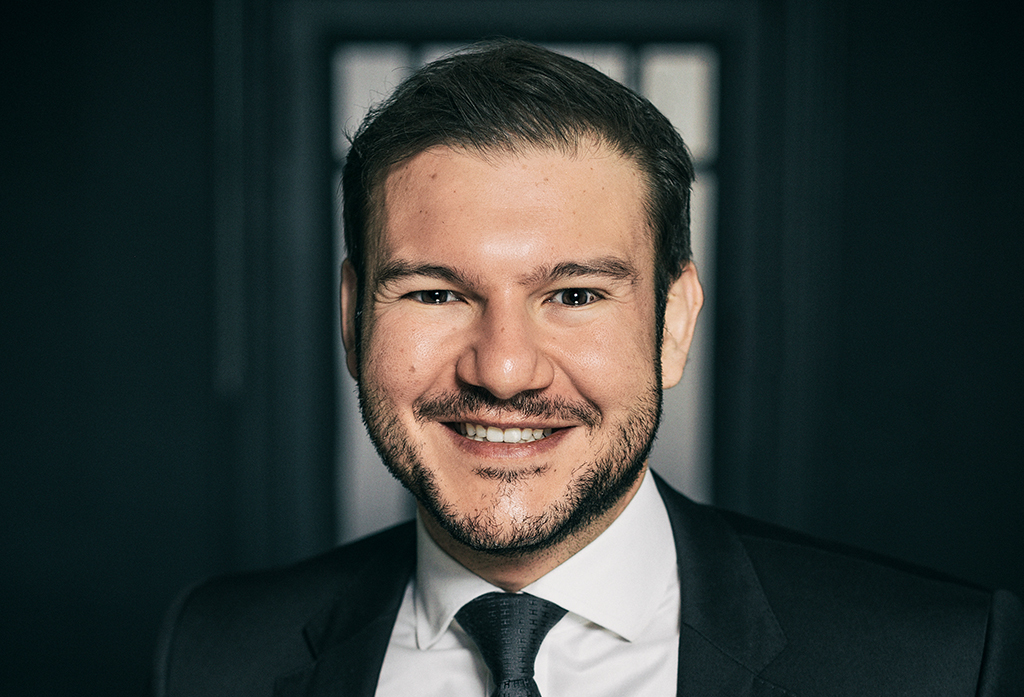Aesthetic treatments used to be something of a taboo, but in 2018, that doesn’t seem to be the case anymore.
Thanks to a host of celebrities opting for enhancement using muscle-relaxing or dermal filler injectables, it’s now become much more common for women to opt for ‘tweakments’ or subtle cosmetic augmentations.
But why has the subject become much more open and accepted, and if you are thinking of undergoing a procedure, when is the right time to start?
Dr Nestor Demosthenous, award-winning aesthetic doctor, is renowned for his skilful and subtle hand when it comes to injectables, but in his home city of Edinburgh, he’s also known for being incredibly responsible when it comes to the care of his patients and prospective patients too, often refusing to treat anybody who he doesn’t feel will benefit from procedures or will see the kinds of results they want to.
Dr Nestor told Scottish Field: ‘Over the past ten years, there has been an enormous shift in the world of aesthetics.
‘From a taboo subject that hardly anybody admitted to, to loud and proud advocates of treatments, we’ve seen a huge change in the way that aesthetics is perceived. But that doesn’t mean that it’s always been helpful; for instance, TV shows like TOWIE and Love Island, where the main characters speak openly about how many treatments they’ve undergone, has really shifted the mindset of many women.
‘In some ways, it’s fantastic, as it’s made many women aware of their options and helped them to feel empowered in the decisions that they make. However, these shows have also openly hosted events like “Botox parties” where women have muscle-relaxing injectables administered in their own homes, placing this procedure alongside trivial beauty appointments like haircuts and manicures.
‘This has really changed the mindset of women, encouraging them to see injectables as a short-term fix, an impulse decision – when really, it’s anything but. I urge all first-time patients to consider their options when it comes to aesthetics, and to take each decision seriously.’
Dr Nestor is committed to safe and ethical practice across the industry, which is why he has given us this guide on aesthetics for first-timers.
When is the right time to start looking into aesthetics?
He said: ‘It depends on what it is that you’re looking to change, or enhance. As a general rule, I believe that anti-ageing procedures, such as muscle-relaxing injectables, shouldn’t even be considered until late twenties or early thirties at the earliest, even as a preventative measure. It’s usually unnecessary, although it does depend on the patient.
‘For procedures like lip fillers, liquid rhinoplasty, or other dermal filler augmentation, it changes on a patient-to-patient basis. I will treat a patient of 21 if the bump in her nose is causing her distress, but I will also turn away a patient of 25 who wants lip fillers if I don’t feel that it is necessary or that she is not an appropriate candidate for treatment.
‘Certain reality TV shows and social media influencers have popularised the use of muscle-relaxing injectables or dermal fillers in the early twenties, but in most cases, this is unnecessary and something that can wait for a few more years.
‘In every case, treatment should be at the discretion of your medical practitioner, to determine whether that is the right course of action for you, or if you should return at a later date.’

Dr Nestor Demosthenous
How do you know if you’re ready to go ahead with a procedure?
Dr Nestor said: ‘I often advise my patients to think about aesthetics like getting a tattoo. What I mean by this is, if you were planning to have a tattoo, you’d consider it for months prior to booking an appointment.
‘You’d research the right artist, you’d spend time thinking about the perfect design, sizing and placement, you’d consider every single detail, you’d scrutinise their portfolios on social media. Very few people leap into tattoos as an impulse decision, and I implore patients to think of aesthetics in the same way. Yes, most aesthetic procedures and injectables are temporary and reversible, but corrections can be expensive and painful, so it’s far better to be sure in the first place of what you really want.
‘If you’ve considered something for a long time now and feel sure that it’s exactly what you want to do, and you have a chosen practitioner in mind, then book a consultation to take things to the next stage and discuss it with your doctor.’
However, Dr Nestor points out that having treatments won’t always help you to feel more confident.
He explained: ‘Peer pressure can often play a part in wanting to undergo procedures. Whatever the age of my patients, from 21 to 71, I ask them what it is that they hope to achieve – whether that’s correcting something that’s always bothered them (such as a bump in the nose, thin lips, or an asymmetric profile), or if it’s because they want to look a certain way.
‘I ask my patients to remember that while treatments can transform your face, they aren’t a miracle procedure and sometimes, these concerns can be more to do with a lack of self-esteem than any physical issue – so be sure that having a procedure will help you to get past whatever it is that you want to change, and that it’s not something more deeply rooted than that.
‘Personally, I don’t treat anybody that I believe is looking into treatments for the wrong reasons; an impulse decision after a breakup, a belief that getting lip fillers will help them get more Instagram followers… we’ve seen it all. Aesthetic procedures are not a fix-it for how you feel about yourself, although they absolutely can help to boost your self-esteem and feel more confident in the way that you look.’
However, he warns that the costs should be carefully looked at.
‘You need to bear in mind that the quality of your results rests entirely on the skill of your practitioner, and highly-skilled, highly-trained practitioners come at a price.
‘Quality treatment is not cheap, and when it comes to your face and body, quality treatment is the only treatment you should be considering. As an example, lip fillers typically cost from £300 upwards for a renowned practitioner to carry out the procedure. Results can last up to a year for most.
‘Don’t be tempted by cheap offers, especially from individuals who aren’t doctors, nurses or dentists as they have no place to be performing treatments. More often than not, these practitioners are not appropriately trained or licensed to perform aesthetic treatments, and are not trained to correct or address any complications that may occur. Corrective procedures can easily run into hundreds of pounds. One of the most popular treatments at my clinic is actually to correct lip fillers which have performed by non-medics. Sadly, it is often with younger women who were tempted by a special offer or a low price – but it ends up being far more expensive in the long term.’

Growing numbers of people are having dermal fillers
Sometimes, people will go to see a doctor but find they are turned down.
The doctor said: ‘If you’ve been refused by your doctor for a treatment, they should tell you the reasons why and explain this to you fully. It could be as simple as that they don’t believe you will benefit from treatment, or that you are not an appropriate candidate. Many doctors will tell you to return in a few months or a year later if you are still set on treatment, but sometimes, you will just not be an appropriate candidate for the type of treatment you are looking to undergo. I truly believe that the only time treatment is appropriate is if we can make something better, otherwise there is no reason to proceed.
‘Expect to be booked in for a preliminary consultation, prior to undergoing the actual treatment itself. A consultation can be free of charge, but not always, and on a non-obligation basis to proceed, before you decide whether to then book in for the procedure.
‘If possible, attend the appointment with clean skin and with hair pulled back, to allow your practitioner to properly assess your skin health, proportions and alignments, and make the correct decisions about the treatment required. This is the perfect time to ask any questions you may have about the procedure and the aftercare.’
He concluded: ‘On average, dermal fillers last between six and eighteen months, depending on the type of filler used. Muscle relaxing injectables tend to last between three and five months, so needs more regular maintenance – another reason to start these types of injectables later in life! These are all things that should be taken into account before you go ahead with aesthetic procedures, as you’ll need to top up your fillers or muscle relaxing injectables regularly to maintain your appearance.’
However, Dr Nestor urges people looking at getting procedures done should be careful in who they choose to see.
‘A doctor, nurse or dentist. I urge all potential patients to do their research thoroughly on which aesthetic practitioner they choose to use. Only choose practitioners who are fully registered to practice dermal fillers and other injectables, and discount anybody who cannot provide proof of their qualifications.
‘Look for reputable practitioners with great testimonials, and ask for recommendations from anybody who you know to have had procedures. Meet them yourself and ask them any questions you may have, ask to see a portfolio of previous patients and make sure that you feel comfortable and that they understand the result you would like to achieve.’
For more from Dr Nestor, visit www.drnestor.co.uk.
TAGS

